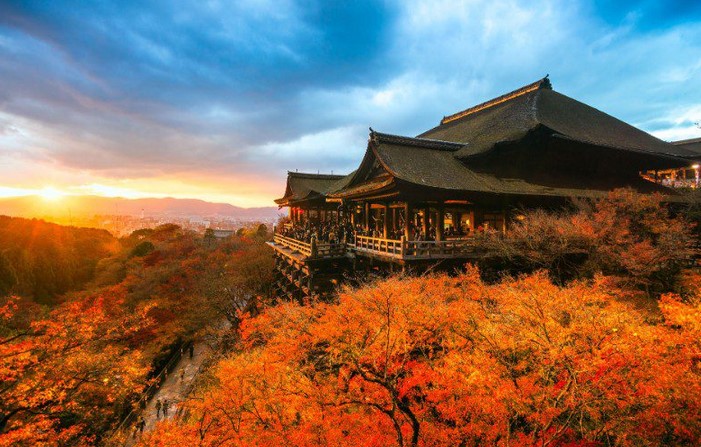
Japan is a country of captivating beauty and rich culture. From its majestic mountains and lush forests to its vibrant cities and ancient temples, Japan is a land of contrasts and surprises. Known as the Land of the Rising Sun, Japan is a place of ancient traditions and modern innovation. From its traditional cuisine to its cutting-edge technology, Japan has something for everyone. Whether you’re looking for a relaxing getaway or an exciting adventure, Japan has something to offer. From its stunning natural beauty to its unique culture, Japan is a country that will leave you with unforgettable memories.
Exploring the Unique Cuisine of Japan: A Guide to Traditional and Modern Dishes
Japan is renowned for its unique and varied cuisine, which has been shaped by centuries of cultural and culinary influences. From traditional dishes such as sushi and tempura to modern creations like ramen and katsu curry, Japanese cuisine offers a wide range of flavors and textures. In this guide, we will explore the history and characteristics of Japanese cuisine, as well as some of the most popular dishes.
The history of Japanese cuisine dates back to the Jomon period (14,000-300 BCE), when the Japanese people began to cultivate and consume rice. Over the centuries, the Japanese diet has been heavily influenced by Chinese and Korean cuisine, as well as by the introduction of new ingredients from Europe and the Americas. This has resulted in a diverse range of dishes, from the simple yet flavorful miso soup to the complex and intricate kaiseki ryori.
Japanese cuisine is characterized by its emphasis on fresh ingredients, minimal use of oil, and a balance of flavors. Dishes are often cooked quickly to preserve the natural flavors of the ingredients. Common ingredients include rice, fish, seaweed, soybeans, and vegetables. Japanese cuisine also makes use of a variety of seasonings, such as soy sauce, mirin, sake, and miso.
Sushi is one of the most popular and recognizable dishes in Japanese cuisine. It is made with vinegared rice and a variety of toppings, such as raw fish, vegetables, and egg. Sushi is typically served with soy sauce, wasabi, and pickled ginger.
Tempura is another popular dish, consisting of battered and deep-fried vegetables or seafood. It is usually served with a dipping sauce made from soy sauce, mirin, and dashi.
Ramen is a modern dish that has become popular around the world. It is a noodle soup made with wheat noodles, a broth flavored with soy sauce or miso, and a variety of toppings, such as pork, vegetables, and egg.
Katsu curry is a dish of deep-fried pork or chicken cutlets served with a curry sauce. It is usually served with rice and pickled vegetables.
Kaiseki ryori is a traditional multi-course meal that is served in a formal setting. It is composed of a variety of dishes, such as sashimi, grilled fish, and simmered vegetables.
These are just a few of the many dishes that make up the unique and varied cuisine of Japan. Whether you are looking for a quick snack or a formal meal, there is something for everyone in Japanese cuisine.
Exploring the Ancient and Modern Architecture of Japan: A Look at the Country’s Rich History and Culture
Japan is a country with a rich history and culture, and its architecture is a reflection of this. From ancient shrines and temples to modern skyscrapers, Japan’s architecture is a testament to the country’s evolution over time. This paper will explore the ancient and modern architecture of Japan, examining the influences that have shaped the country’s architectural styles and the ways in which they have evolved over time.
The ancient architecture of Japan is characterized by its simplicity and elegance. Shinto shrines and Buddhist temples are some of the most iconic examples of this style. These structures are typically made of wood and feature curved roofs, intricate carvings, and ornate decorations. The use of natural materials such as wood and stone is a common feature of ancient Japanese architecture, as is the incorporation of elements from nature, such as plants and animals.
The modern architecture of Japan is a reflection of the country’s rapid modernization in the 20th century. Skyscrapers, bridges, and other large-scale structures are common features of the modern Japanese landscape. These structures are often characterized by their sleek, modern designs and the use of advanced materials such as steel and concrete. In addition, modern Japanese architecture often incorporates elements of traditional Japanese design, such as curved roofs and intricate carvings.
The influences that have shaped the architecture of Japan are varied and complex. The country’s long history of foreign influence has had a major impact on its architectural styles. For example, the introduction of Buddhism to Japan in the 6th century had a profound effect on the country’s architecture, as did the influx of Chinese and Korean architectural styles during the Edo period. In addition, the influence of Western architecture has been felt in Japan since the Meiji period, when the country began to embrace modernity.
The evolution of Japanese architecture over time is a testament to the country’s rich history and culture. From ancient shrines and temples to modern skyscrapers, Japan’s architecture is a reflection of the country’s evolution over time. By examining the influences that have shaped the country’s architectural styles and the ways in which they have evolved over time, we can gain a better understanding of Japan’s rich history and culture.The Land of the Rising Sun, Japan, is a country of captivating beauty and culture. From its stunning natural landscapes to its vibrant cities, Japan has something to offer everyone. From its ancient temples and shrines to its modern architecture, Japan is a country of contrasts and surprises. From its traditional cuisine to its cutting-edge technology, Japan is a country of innovation and progress. From its rich history to its modern-day culture, Japan is a country of endless fascination. Unveiling the charms of Japan is an experience that will stay with you forever.